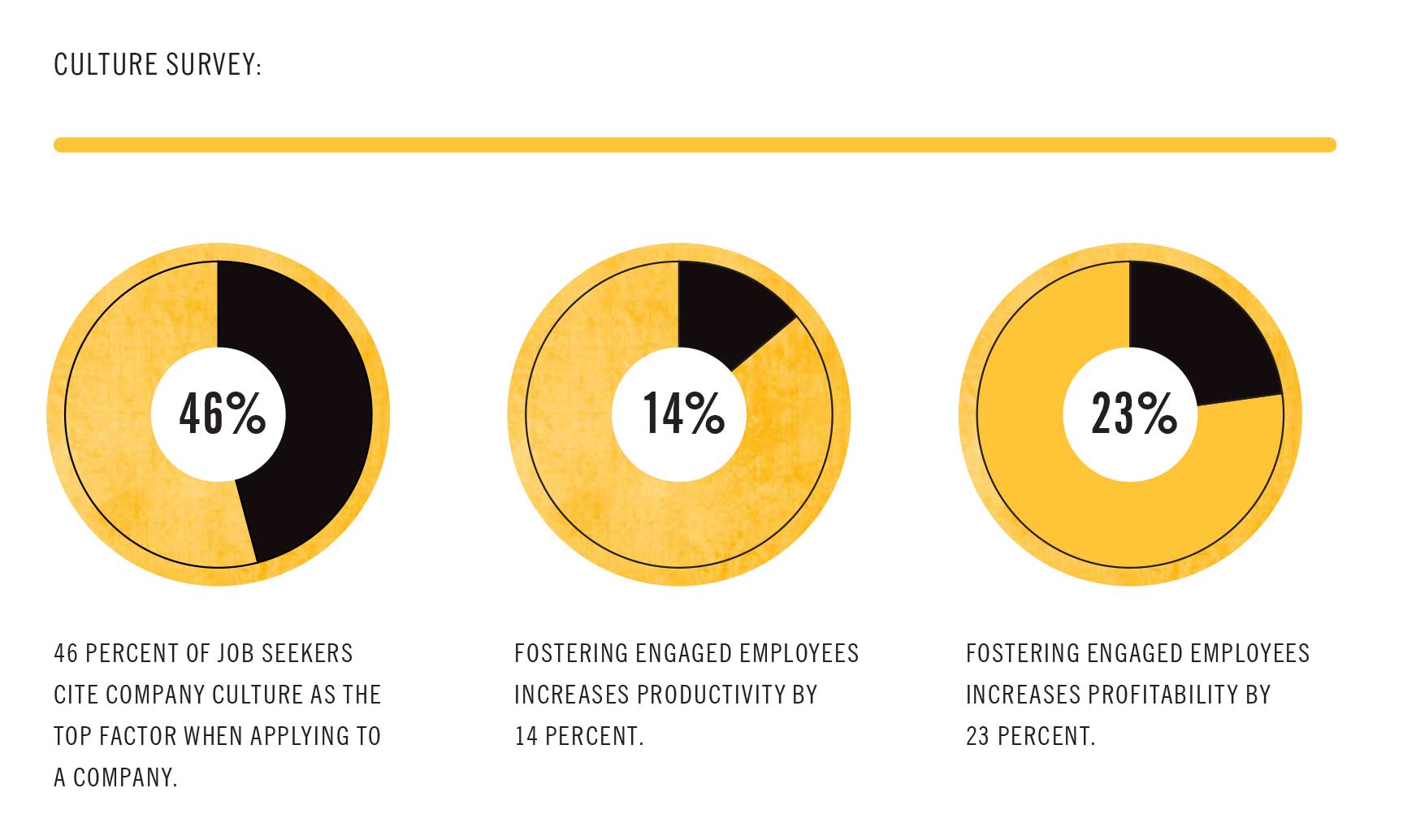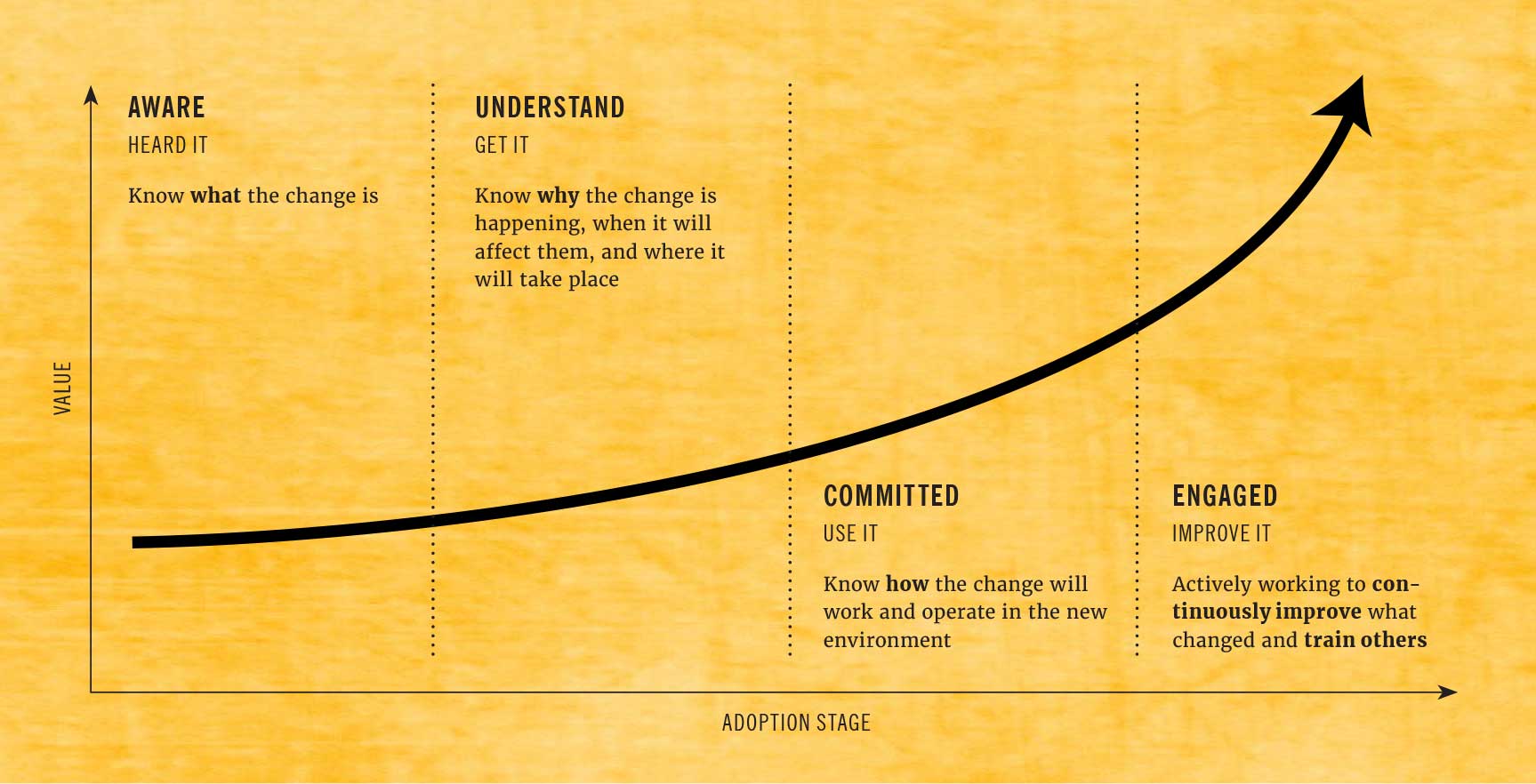Change is constant, and how it is managed influences the overall culture of an organization. Effective change management is essential for an organization to stay agile and innovative. A strong company culture helps attract and retain top talent, increase employee engagement and productivity, and improve overall organizational performance. In fact, 46 percent of job seekers cite company culture as the top factor when applying to a company1 while fostering engaged employees reportedly increases productivity by 14 percent and profitability by 23 percent.2

On the other hand, a toxic or negative company culture leads to high turnover rates, low morale, and decreased productivity, ultimately impacting the bottom line. Without incorporating trust, transparency, and collaboration into your change management process, implementing change will come at a steep price and could cripple your company’s culture.
As a leader, you represent the company’s culture. And your actions and words influence employees’ willingness to adopt change. If you build constructive habits around managing and adopting change, your employees will do the same.
The Jabian Change Curve (see graph below) is a model designed to help you do just that. It outlines the four stages — awareness, understanding, commitment, and engagement — that employees experience when effectively building new habits to adopt change. And it’s designed to help people leaders manage their employees through the entire change process. To help ensure poor change management does not submarine your company’s culture, we will walk through each step of the Jabian Change Curve and share best practices through practical examples.

AWARE
The first stage in the change curve is awareness, or knowing what the change is. And while varying stakeholders may learn about the change at different times, it is important to clearly define the change and its overall impacts. A best practice at this stage is to conduct a stakeholder analysis and change impact assessment with each key stakeholder group.
Stakeholder analyses and change impact assessments give stakeholders the opportunity to provide feedback and contribute ideas that inform the change management approach. Through this process, your team becomes better equipped to develop an optimal plan to help stakeholders prepare for and adopt the change. For example, they may create training for specific use cases, adjust ways of working, or refine processes to support the change.
Additionally, this process encourages collaboration between teams when brainstorming change solutions, creating a sense of control for the stakeholders involved. It also empowers stakeholders to take ownership of the change, leading to increased engagement and commitment to the process.
Change can be unsettling. Involving stakeholders in the change process shows them the organization values their input and cares about their needs. It builds trust between the team rolling out the change initiative and those impacted. By working together and listening to your stakeholders, you can break down silos and create a culture of trust and respect, both of which are critical for effective teamwork and a happy workforce. Employees are 26 percent more likely to leave their jobs if they feel there is a lack of respect between colleagues.2
UNDERSTAND
The second stage of the change curve is understanding the change: why it is happening, when it will affect those in the organization, and how it will take place. This stage solidifies each stakeholder’s understanding of the change and how to prepare for it. Before rolling out a change, it is crucial for each group of stakeholders to believe they can accommodate and adopt the change successfully.
A change management approach and tactical plan — based on the findings from the change impact assessments — outline how the change will be rolled out. This includes what communications will look like to inform the organization of the change (key messages by stakeholder group, timing, delivery channels) and what training method(s) are needed to fit each stakeholder group, as well as how to enable various teams across the organization in supporting the change and ways to gain buy-in from key leaders in high-impact groups to help reinforce and facilitate the change. Having a comprehensive plan for rolling out the change is crucial to helping stakeholders feel confident and prepared. Also, being transparent helps stakeholders feel more comfortable with the plan and builds trust between all parties.
COMMITTED and ENGAGED
The last two stages of the curve are being committed to the change and engaged throughout the process. These two steps share commonalities that often occur in parallel depending on an employee’s timing and progress through the change curve. Commitment requires leaders to know how the new process or tool will work and when to begin operating in the new environment. Engagement, meanwhile, involves actively working to continuously improve what has changed and help others understand the change.
These two stages occur when the change is implemented and employees begin to experience it firsthand. It’s key to gain buy-in from employees during this period and ensure they understand that there will be a learning curve to climb. There is a false narrative among today’s business leaders that because change will become the new norm over time, it shouldn’t be communicated to the workforce and never needs reevaluation. Quite the opposite is true. Change requires continuous improvement, and this only comes through commitment and engagement.
As a leader, championing and owning the improvement of a change can be challenging. It is important to be strategic, transparent, and consistent when communicating improvements. Change is difficult to manage, but stakeholders are more likely to trust the process if they are kept in the loop and receive reinforcements from leaders they trust.
Leaders set the tone for their teams, whose attitudes and behaviors then feed into the company culture. Leaders maintain a profound impact on how changes are understood and accepted, and they influence the general attitude no matter the scale of the change. It is also important for key leaders across the organization to be aligned and on message in order to minimize conflicting information or confusion regarding the change.
Conclusion
To truly see the positive impact of effective change management on company culture, organizations must be willing to dedicate consistent time and resources to it. Employees who believe their organization sets them up for success are more confident and likely to embrace new ideas and adopt innovative ways of doing their jobs. At scale, this outlook creates a culture of continuous improvement across the organization, where employees feel positive about change and trust that the organization is reliable in helping them transition successfully.
An organization that manages change well creates employees who are more flexible, innovative, and less resistant. This mindset becomes embedded in their behaviors and how they operate, and it carries over to future change initiatives, which makes your organization quicker and more resilient in the face of change. And that agility is crucial for success in today’s fast-paced and ever-changing business environment.
